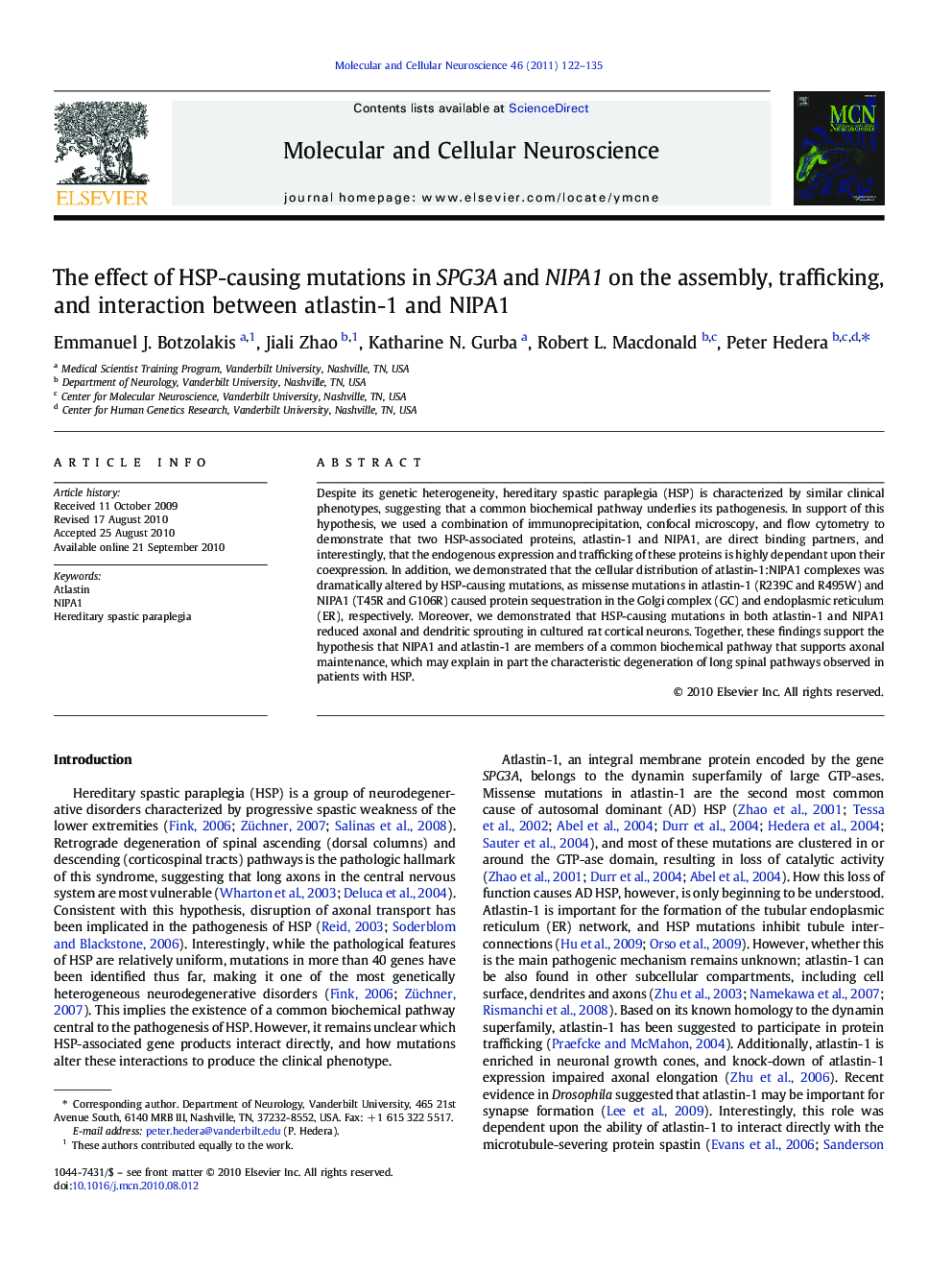| Article ID | Journal | Published Year | Pages | File Type |
|---|---|---|---|---|
| 10956630 | Molecular and Cellular Neuroscience | 2011 | 14 Pages |
Abstract
Despite its genetic heterogeneity, hereditary spastic paraplegia (HSP) is characterized by similar clinical phenotypes, suggesting that a common biochemical pathway underlies its pathogenesis. In support of this hypothesis, we used a combination of immunoprecipitation, confocal microscopy, and flow cytometry to demonstrate that two HSP-associated proteins, atlastin-1 and NIPA1, are direct binding partners, and interestingly, that the endogenous expression and trafficking of these proteins is highly dependant upon their coexpression. In addition, we demonstrated that the cellular distribution of atlastin-1:NIPA1 complexes was dramatically altered by HSP-causing mutations, as missense mutations in atlastin-1 (R239C and R495W) and NIPA1 (T45R and G106R) caused protein sequestration in the Golgi complex (GC) and endoplasmic reticulum (ER), respectively. Moreover, we demonstrated that HSP-causing mutations in both atlastin-1 and NIPA1 reduced axonal and dendritic sprouting in cultured rat cortical neurons. Together, these findings support the hypothesis that NIPA1 and atlastin-1 are members of a common biochemical pathway that supports axonal maintenance, which may explain in part the characteristic degeneration of long spinal pathways observed in patients with HSP.
Related Topics
Life Sciences
Biochemistry, Genetics and Molecular Biology
Cell Biology
Authors
Emmanuel J. Botzolakis, Jiali Zhao, Katharine N. Gurba, Robert L. Macdonald, Peter Hedera,
